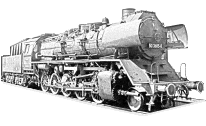Forthcoming steam weekends (2026): 18-19 April 2026; 13-14 June 2026; 13 September 2026; 19 September 2026; 10-11 October 2026
Opening hours at other times: from 04 April 2026 to 24 October 2026 every saturday from 10 am to 5 pm.
Further information is available here.
Opening hours at other times: from 04 April 2026 to 24 October 2026 every saturday from 10 am to 5 pm.
Further information is available here.
18-19 April 2026: Saisoneröffnung
News
29.02.2020: Preparations for the new season: Part 2
Last Saturday was devoted entirely to our steam engine 50 3570. Here too some maintenance work had to be done. The colleagues removed the piston valves in the two steam chests in order to clean them and examine them for damages. Here are two pictures of the removal: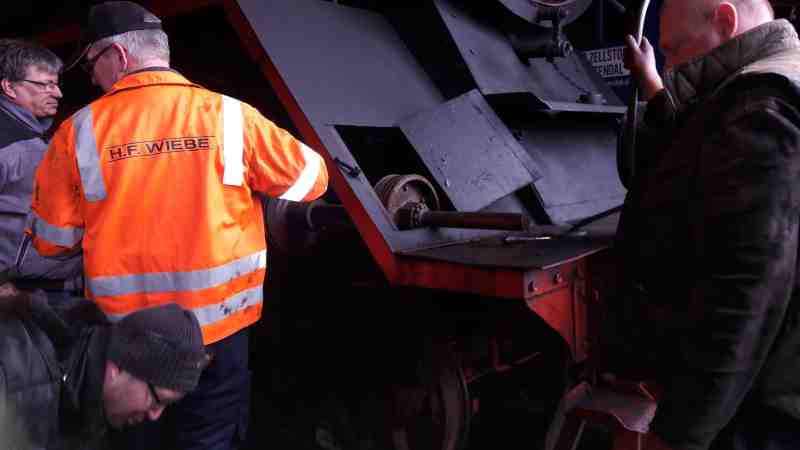
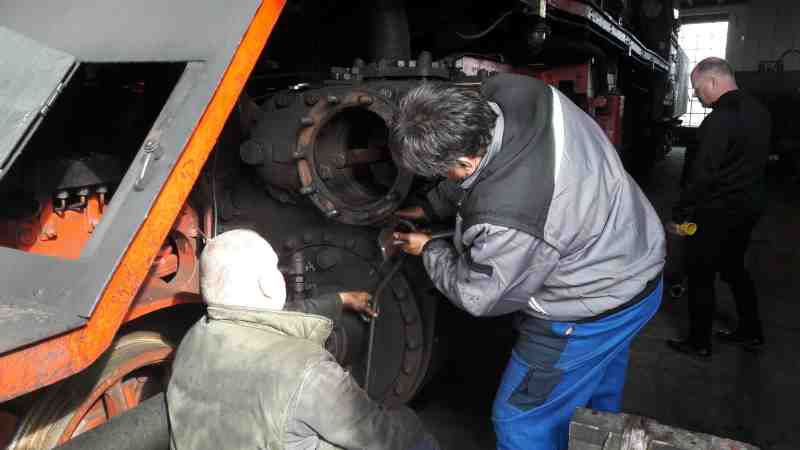
In the first picture you can still see the piston behind the maintenance flap. In the second picture the piston has already been removed. You can see the empty liner of the valve chest at the top and the circular cover of the steam cylinder below.
After removal of the piston valve, the piston rings which seal the pistons heads aginst the liner were removed, .
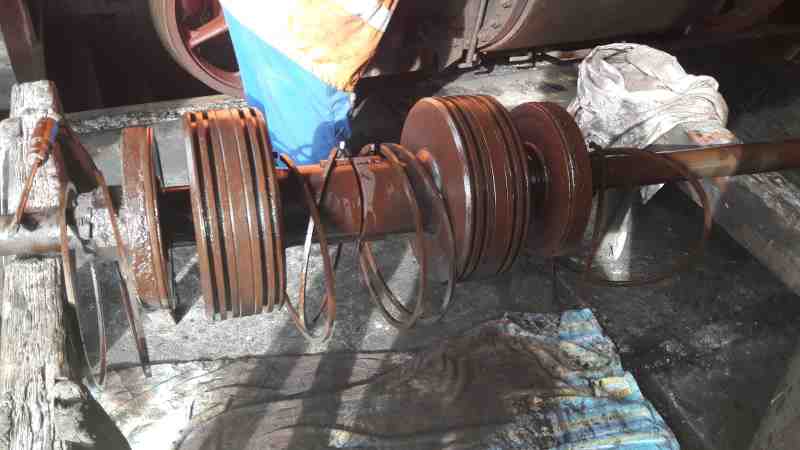
Then the piston ring grooves were cleaned of dirt. Our colleague still looks happy before the work starts - he is still relatively clean...
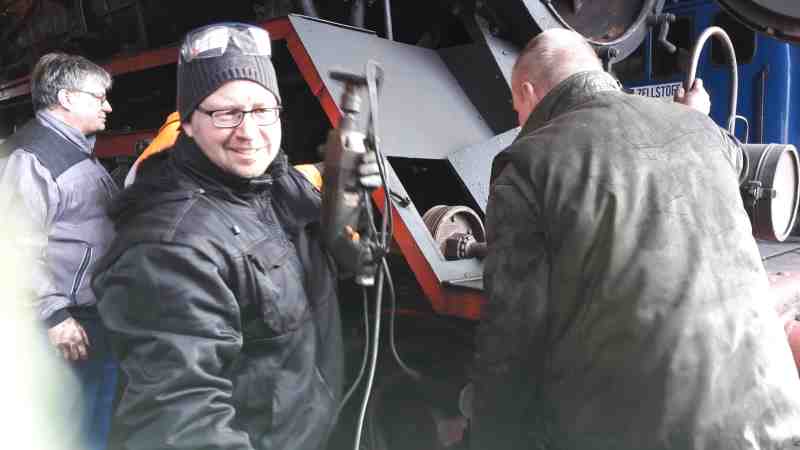
Here is a short explanation of the function of the piston valves of a steam loco. It is well known that the steam pressure in the steam cylinders is converted into motion because the steam presses on one side or the other of the piston head alternately, which drives the wheels via the connecting rods.
The side from which the steam is now fed into the steam cylinders is controlled by the aforementioned piston valves. They open the corresponding inlet and exhaust portds, through which the steam is admitted to and exhausted from the steam cylinders. They thus have the same purpose as the camshaft in a combustion engine. However, the valves also have the effect that the steam-passages in the steam cylinders are, so to speak, short-circuited when no steam is applied and the locomotive is coasting. This prevents the steam cylinders from working as air-brake pumps and thus causing a considerable braking effect.
in the penultimate picture you see the piston valve in its "midgear" position: The two large inner slide valve bodies are in the middle position as if the steam locomotive is idling while rolling. If the steam engine is to work, fresh steam under high pressure is fed into the steam chest, which then pforces the inner piston heads outwards. This either closes or opens the inlet or exhaust ports of the steam cylinders, according to the position of the piston valve in relation to the position of the steam cylinders and the desired direction of travel.
Since all this is difficult to explain, here is a small animation we have taken from the internet page https://de.wikipedia.org/wiki/Steuerung_(steam engine). You can see the cutaway cylinder to the right of the driving axles of the locomotive. On the top is the steam chest with the piston valves, below is the steam cylinder. Depending on the direction in which the locomotive is to travel and the position of the piston valves, steam is either admitted to the steam cylinders through the valve ports or exhausted. If the direction of travel is to be changed, the valve is moved in the steam chest in such a way that the other side of the piston head has live steam applied to it.
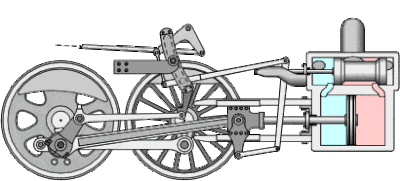
Dampflokfreunde Salzwedel e.V. Am Bahnhof 6, 19322 Wittenberge
